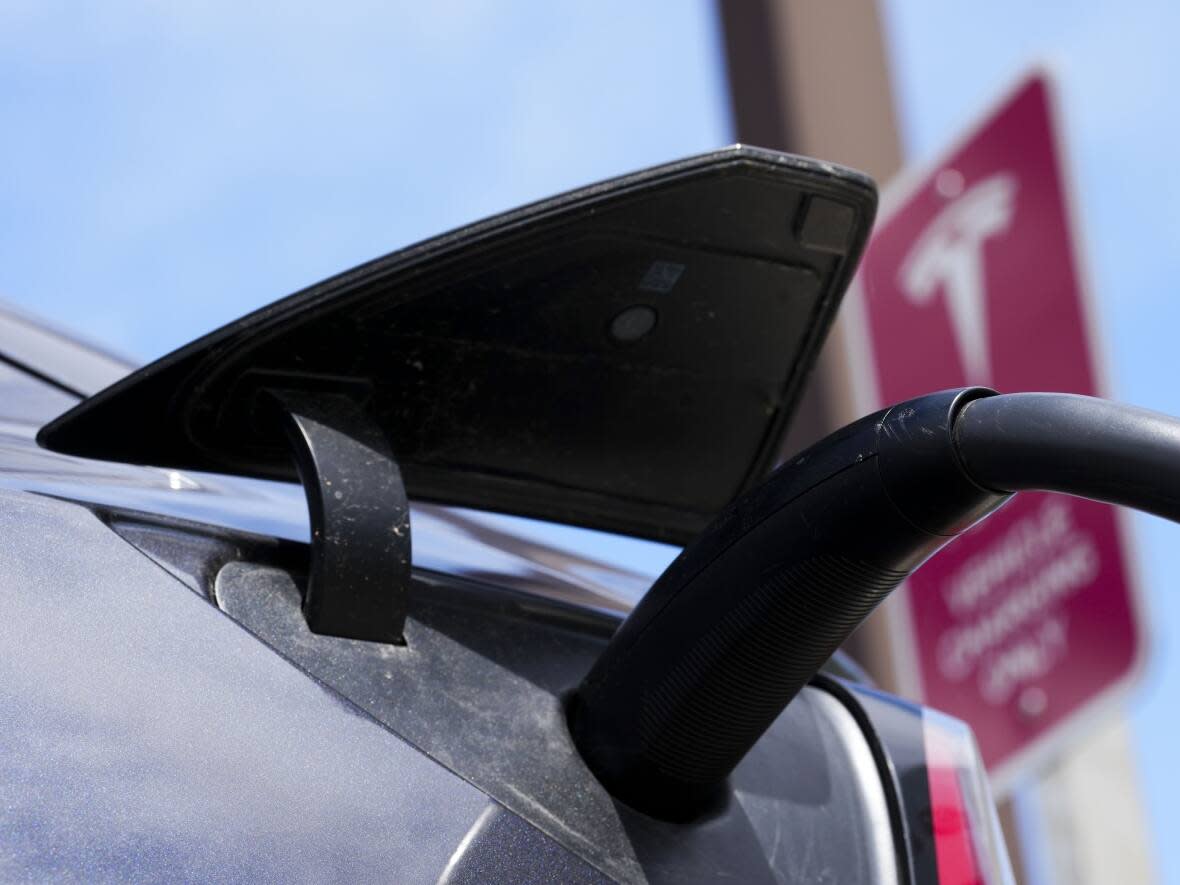Sask. could be crucial in the nation's electric vehicle industry — if Canada acts, report says

If Canada acts now, it could be a competitor in the electric vehicle battery supply chain, boosting the economy and adding jobs — and Saskatchewan could play a pivotal role.
That's according to a report released Wednesday by Clean Energy Canada alongside the non-profit Trillium Network for Advanced Manufacturing, looking at Canada's potential in the electric vehicle sector.
The report says that sector could add up to 250,000 jobs by 2030 and $48 billion to the economy each year.
Evan Pivnick is the clean energy program manager at Clean Energy Canada — an energy and economic think-tank based at British Columbia's Simon Fraser University.
Canada's Prairie provinces already have innovative resource practices, he told The Morning Edition host Stefani Langenegger in an interview, nodding to Saskatchewan company Prairie Lithium. It derives the mineral from lithium-rich brine and is developing technology to separate it. Lithium is a key component of electric vehicle batteries.
The company completed its first well in southeast Saskatchewan in late 2021, saying it believes it could be the first well drilled for lithium brine in Canada, according to a news release.
Pivnick said the Prairies could share technology and know-how with other Canadian jurisdictions "about how we can seize some of the opportunities as that critical mineral powerhouse that we are, but to do so in a way that we make high environmental standards a hallmark of what the Canadian battery industry is known for."
Pam Schwann, president of the Saskatchewan Mining Association, said Saskatchewan could play an important role in Canada's processing of the valuable minerals.
Saskatchewan has two labs that process rare earth elements into magnets used in electric vehicle car batteries, among other technologies.
Schwann said both are having their grand openings on Tuesday.
Rare earth elements — a term that describes 17 metallic elements — are part of much of modern technology, including cellphones and wind turbines, in addition to electric vehicles.

She said one lab from Vital Metals, a Saskatoon-based company, is the only rare earth element producer in Canada, meaning Saskatchewan could play a crucial role in the country's purifying of the minerals.
"Without that processing step and without those processing facilities, Canada misses out on a key component of the value chain," Schwann said.
"That I see as an area that could be carved out for Saskatchewan really developing that global centre of expertise, where countries ship their rarest element concentrates to Saskatchewan … to be processed."

In late August, the Saskatchewan Research Council's Rare Earth Processing Facility produced Canada's first metal ingots — a rare earth metal — two months after the province announced another $20 million in funding to expand its abilities to smelt ingots.
Processing rare earth elements is a complex process, Schwann explained, making the labs in Saskatchewan very important to the nation's future battery supply chain.
Potential as EV battery powerhouse
Canada's access to key metals and minerals puts it among the top five countries in the world in terms of potential in the battery supply chain, according to Clean Energy Canada.
Rebecca Gotto, manager of government relations at the Saskatchewan Research Council, told CBC in August that Canada has some of the largest known reserves and resources of rare earths in the world.
Rare earth element projects as of 2020
Canada has 21 rare earth mining projects in various stages of development. Three are in Saskatchewan.
Pivnick said the report breaks down three main areas where Canada can capitalize: assembling electric vehicles, battery cell manufacturing, and gathering materials, whether by recycling batteries or mining the elements domestically.
Echoing the report, Pivnick said Ottawa needs to develop a battery strategy to guide development of the battery supply chain across the country, and look at growing the workforce and market to take advantage of it.
If the federal government doesn't take the right steps soon, the report projects it will only meet one-quarter of its potential, Pivnick said.


